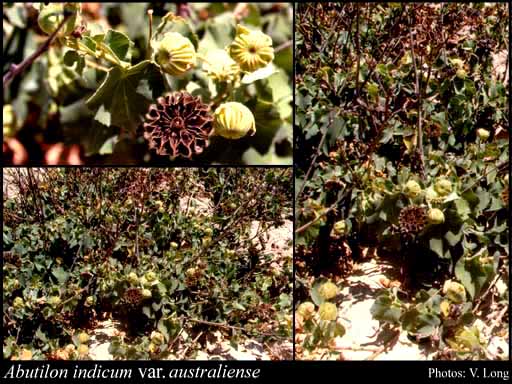This name is not current. Find out more information on related names.
- Reference
- Banks & Solander, Ill.Austral.Pl.Cook's Voy. 1:10, Pl. 19 (1900)
- Conservation Code
- Not threatened
- Naturalised Status
- Native to Western Australia
- Name Status
- Not Current
Upright shrub, 0.3-4 m high. Fl. yellow-orange, Feb to Nov. Sandy soils. Coastal dunes & flats, creeks.

Scientific Description
Shrub. Stems glabrous. Leaves 27-120 mm long, 18-90 mm wide, not lobed; margins crenate; indumentum present, with non-tubercle-based simple hairs, with stellate hairs; stipules present but early deciduous (only visible on youngest leaves). Perianth clearly of two whorls (calyx and corolla), the corolla obvious and prominent. Pedicel present, 12-50 mm long; indumentum present, with simple hairs. Calyx green, 10-20 mm long, the lobes fused less than half their length, simple hairs (without tubercle bases) present. Corolla yellow or orange, 25-30 mm long, glabrous. Stamens many, united and arising from a staminal tube around the style; filaments present, 9-13 mm long; anthers 1-1.2 mm long. Staminodes absent. Ovary hairs or scales present, simple hairs present; style 1, 14-18 mm long, with numerous style branches or lobes, mostly glabrous. Fruits dehiscent (capsules and follicles), length-width ratio more or less as long as wide, hairs or scales present, stellate hairs present, Sessile glands absent; apex distinctly flat-topped; prickles absent (except perhaps a terminal awn); terminal awns or spines absent; calyx persistent to mature fruit; carpels 18-20; seeds per loculus 2-4. Flowering time February, March, April, May, June, July, August, September, October or November. Distribution Botanical Province Northern or Eremaean, IBRA Bioregion Pilbara, Carnarvon, North Kimberley, Victoria Bonaparte or Dampierland.